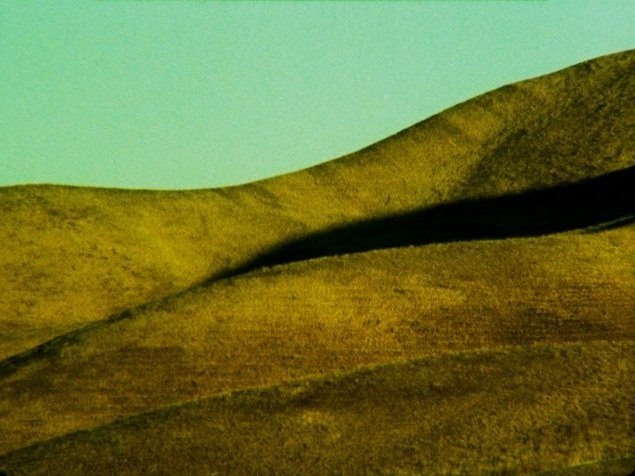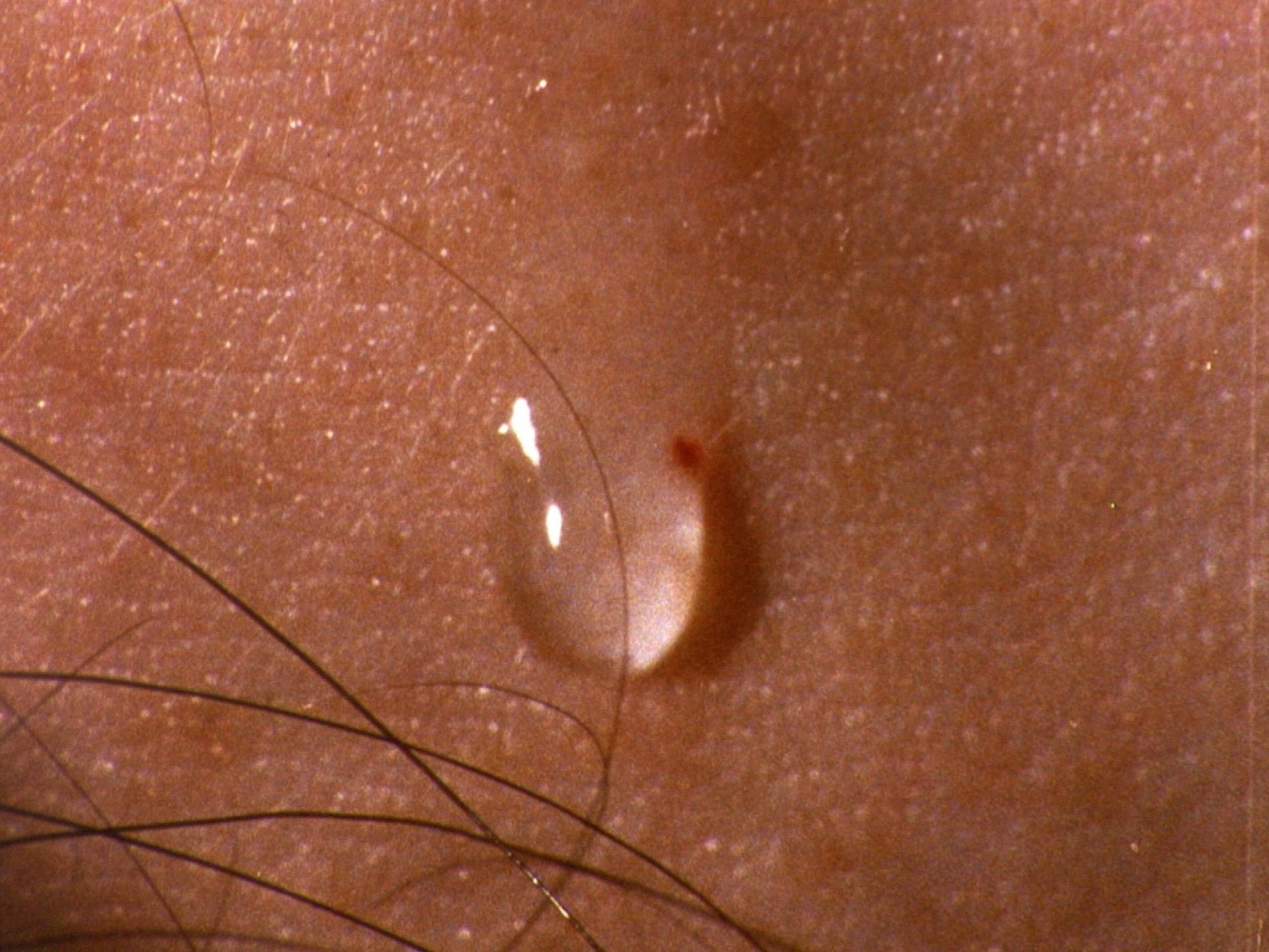Program 4
curated by Zachary Epcar
▴ Madison Brookshire, Ezra Buchla, and Yasi Perera in person ▴
Friday, March 31, 2023 @ 9pm
The Lab (2948 16th Street, SF, CA)
Total running time: 58 minutes
$6 - 10 sliding scale - tickets available at the door
Festival passes available for purchase here
Two Suns
Madison Brookshire
2013/2019 | 4 minutes | USA | 16mm | color | live musical performance
A 16mm film that is a musical score: two small spots of sunlight slowly move over five hand-drawn lines, creating a subtly shifting piece of music for live musicians to perform.
-MB
Live performance by Ezra Buchla & Yasi Perera
The Dragon is the Frame
Mary Helena Clark
2014 | 14 minutes | 16mm | color/b&w | sound
An experimental detective film made in remembrance: keeping a diary, footnotes of film history, and the puzzle of depression.
-MHC
What are you thinking?
I am thinking of how many times this poem
Will be repeated. How many summers
Will torture California
Until the damned maps burn
Until the mad cartographer
Falls to the ground and possesses
The sweet thick earth from which he has been hiding.
What are you thinking now?
- Jack Spicer, Psychoanalysis: An Elegy
Private Imaginings and Narrative Facts
Edward Owens
1966 | 6 minutes | 16mm | color | silent
“Originally titled Mildered Owens: Toward Fiction, the achingly silent Private Imaginings and Narrative Facts focuses more directly on [the filmmaker’s] mother, setting her regal depiction amidst delicate pulses of editing and oblique superimpositions, evoking the gap between the homebound realities of life and desires for far-off luxury and refinement”
-Ed Halter
House Fuck
Lyra Hill
2010 | 6 minutes | 16mm | color | sound
House Fuck is a lust letter to the textures of antiquity, the sensation of home, and the sounds of my radiator. House Fuck is about touching surfaces. House Fuck is an erotic encounter with personal space.
-LH
Sharon and the Birds on the Way to the Wedding
Lynn Marie Kirby
1987 | 20 minutes | 16mm | color/b&w | sound
This is a film about the language and perception of love and romance. The film blurs the line between fact and fiction, personal and cultural experience. "She found that the truth didn't sound real. She did research. She went through the magazines. She found that there existed a magazine kind of love that had a vocabulary of about twelve words. She found that if she rearranged these twelve words around different names and places that she could make a story."
-LMK
Printed Sunset
Andrés Baron
2017 | 6 minutes | 16mm | color | sound
The aesthetic tension between the simulated visual representation of the phases of a sunset, reproduced onto large-scale boards, is juxtaposed with the easy intimacy of the two female subjects who hold our gaze.
-AB
Madison Brookshire lives in Los Angeles, where he makes films, paintings, and performances. His work invites viewers to become aware of perceptual processes and the sensuous experience of time. He frequently collaborates with musicians and composers, including Ezra Buchla, LCollective, Mark So, Laura Steenberge, and Tashi Wada.
Ezra Buchla is a person from California, who performs live music primarily using voice, viola and realtime electronic processing.
Yasi Perera, raised in California, plays percussion and electronics.
Mary Helena Clark is an artist working in film, video, and installation. Her work uses the language of collage to explore dissociative states through cinema, bringing together disparate subjects and styles that suggest an exterior logic or code. Using the conventions of narrative, language, and genre, her films explore shifting subjectivities and the limits of the embodied camera. She has been showing films and works in museums, art venues and festivals including IFFR, Rotterdam; New York Film Festival; Toronto International Film Festival; Cinéma du réel, Paris; and the 2017 Whitney Biennial, New York.
Edward Owens (US, 1949-2009) was a queer African American artist who was working in painting, sculpture, and 8mm film at the Art Institute of Chicago in the 1960s. Encouraged by his teacher, the filmmaker Gregory Markopoulos, Owens moved to New York where he came in touch with the major artistic personalities of that time such as Andy Warhol, Gerard Malanga, Marie Menken, Gregory Battcock and Charles Boultenhouse. Over the next four years, Owens created a strikingly beautiful series of films. Depicting heartbreak, queer desire, and his own family, they displayed an increasing mastery of form, inspired by Markopoulos’s style but transformed into something purely his own.
Moving between narratives of geographic and domestic landscapes, Lynn Marie Kirby explores traces of a human presence through the residue of light, history, and listening. With a background in cinema and conceptual performance, she works with shifting recording technologies, creating film/video hybrids, drawings, and installations that become records of certain times and places. Using methods such as site interruption, writing, and collaboration, her projects manifest at the intersection of events and archives, looking at the links between public and private, biographical and system ecologies.
Kirby’s work has been widely exhibited in galleries and museums, including the Whitney Museum of American Art; the Museum of Modern Art, New York; Olympic Museum, Sarajevo; the Pompidou Centre in Paris; Arsenal in Berlin; Manage in St. Petersburg; Portland Museum of Art; the Kennedy Center and the Corcoran Gallery in Washington DC; LACE and MOCA in Los Angeles, the Pacific Film Archive in Berkeley; the Oakland Museum of California in Oakland; the San Francisco Cinematheque, Yerba Buena Center for the Arts, the de Young Museum, the Museum of Modern Art and Triple Base Gallery in San Francisco. Her films and videos have shown at film festivals around the world, including Oberhausen, Toronto, London, San Francisco, and Athens. She is the recipient of grants and fellowships from the Guggenheim Foundation, Djerassi Foundation, Center for Cultural Innovation, the National Endowment for the Arts, Film Arts Foundation, Jerome Foundation, Kelsey Street Press, and the San Francisco Arts Commission.
Kirby is a Professor of Fine Arts and Film at California College of the Arts.
Andrés Baron, born in Bogotá, Colombia, lives and works in Paris. Through a practice of 16mm film, video and photography, his approach establishes a relationship with the image transformed by screens and networks, playing simultaneously on the frontality and the spaces of representation. He received his MFA from l’École nationale supérieure des Arts Décoratifs in Paris. His work has been presented at the Edinburgh International Film Festival, the Moscow International Biennale for Young Art, the EMAF in Osnabrück, Aesthetica Short Film Festival among others.






